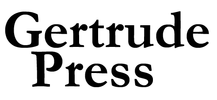Can You Handle the Real Thing?
Image and Magnitude in Attack of the Fifty-Foot Centerfold
|
In a pulp film centered around an “attack,” the attacker could be motivated by any number of causes—bloodthirst, bad science, miscommunication, hunger, lust, the quest for justice. So, what might a giant centerfold who’s escaped her pages want? What is the double-Z-cup-wearing, fish-and-grilled-cheese-devouring Technicolor/3-D colossus of Dorothy Chan’s Attack of the Fifty-Foot Centerfold seeking? She wants whatever the hell she decides she wants, and good on her: “This is LA, and women will have it all.” (66)
Chan is not afraid to write about sexuality and longing—her odes can be dirty, her titles are always titillating, and her oft-long lines create a provocative flow. The book’s title poem, “Attack of the Fifty-Foot Centerfold with the Killer Legs,” draws in many of the themes that make this collection soar: desire, cuisine, cinema, and the call of decadence.
“…Godzilla needed a building, but I’ll take a billboard, knock it down, let some cars roller-coaster down my legs, then return home, sit for a royal portrait by the pool…” This poem’s speaker directs her 100 men (“gym bunnies, / eating ripe bananas”) to buy her Frederick’s of Hollywood lingerie and drench her with buckets of champagne—it’s a rollicking and luxe “attack.” Fay Wray even appears, the love object of King Kong but also the namesake of Faye Dunaway from Chinatown, a film Chan draws on elsewhere. This Fay-presence is notable because part of what makes our poet’s sensibility so whip-smart is her invocation of GAZE. How to differentiate spectacle from spectacular? Who gets to direct the camera and who fills the frame? A centerfold who multiplies in size and takes the city may be looked at, but she also runs shit and directs her own sight. She is the object-become-subject, the poetic speaker and boss of her own glam sex. Much like a multi-paneled mirror, the act of looking (at oneself, at another) is complex. To focus too much on a single poem or portion of this book would be to undermine the acuity and intricacy of what Chan has achieved. Attack of the Fifty-Foot Centerfold is arranged in three sections, with threes appearing throughout (three-word repetitions like “girls, girls, girls” “fetish is fetish is fetish,” three (!) triple sonnets) and also plenty of twinning (the poet and the personas, the sisters of “Summer Double Issue”). The first section, “Snake Daughter,” abounds with two- and three-line forms through which the speaker reflects on her family and origin story (she is a Snake in the Chinese zodiac). Chan is not afraid to write about sexuality and longing—her odes can be dirty, her titles are always titillating, and her oft-long lines create a provocative flow (not unlike the winding of a snake) wherein the turns of the poet’s mind, her movement across timeframes and cityscapes and right over taboo, mesmerize. From “Snake Daughter” (11): “A snake daughter is a seductress, the family fortune-teller warns my parents over the phone after they’ve moved from Hong Kong to America…” From “Ode to Psychics, Hookers, Shark Bone, and Free Iced Tea” (21): “…And at brunch, I yell at the waiter when I order a Croque Madame and he keeps calling it a Monsieur, and why can’t he see the egg soaking, penetrating the toast on top, taking charge, like that French movie with the two prostitutes milking their Sugar Parents, the female one teaching the male hooker to please his Sugar Mama, amuse her with some fun fact…” |
Food is crucial to this book. As are the multitude of creatures and bright sensual detail that refuse to quit—this lush display interacts astutely with poetic form. Section two, “My Chinatown,” is a quadruple sonnet crown set in Hong Kong and the Chinatowns of Philadelphia, New York, and Las Vegas. The sonnet is an apt container for the images and ideas here, ones that resist containment (among them gossip, dogs, seafood, citrus, shopping, the spin of several lazy Susans). The constraint also suits a persistent question: How does America both inaccurately depict and infiltrate culture? Nothing fits squarely in a box, even if it seems to. “American waffles” and soap operas, slang and movies, Coca-Cola and burgers, and even still “this isn’t Chinatown from the movies” (42) and “this isn’t Hong Kong from the movies” (43). And these same movies further an untenable love affair with France, a romance with Paris.
From “XVII. In the Jungle” (52): “…Over beef bento, he feeds me FILM: How I remind him of Audrey Tautou, the quirky sepia of French comedy, when a call from ‘Mothership’ interrupts…” Although at play with limits, Chan encourages some figures to literally break their cages. A boar escapes the Hong Kong Zoo and hits a department store (56); crabs are imagined bursting through their plastic bag—“they break free, / crabbing all over the market, pinching / crying babies and bums on benches—an outbreak / of crabs cherishing life” (60). These feats foreshadow the book’s third section, “Centerfolds, Histories, and Fantasies,” wherein showgirls are set free, to run “past / the theatre aisles into the wild / of the Las Vegas Strip: lions prowling / the night, chasing gazelles inside peep shows” (78). This final section is by far the most bawdy and free to roam, freely invoking the sexual body (and the desire to observe) while critiquing fetish. From “Ode to the Birds of Sex Paradise: At Age Three, I Watched My First Porno” (74): “…I look behind me at the man with Megami, who’s ready To go home and pig out on maki rolls and Asahi And High-Chew, and I grab a copy for myself, Because girls should have a little peek too… And beauty is beauty is beauty, The animated girls giving me life, giving me daring As I pig out on my ice cream and chocolate And flower-shaped doughnuts and a couple pork buns.” Consumption and pleasure are made equal-opportunity sports. Still, Chan’s concerns aren’t all carnal, clearly. In the book’s final poem, the speaker recalls Hello Nurse, a character from Animaniacs that left a “seven-year-old me to wonder / what place a little Asian girl has in this world / of ’90s Marilyn Monroes running in slo-mo / on the beach wearing red swimsuits, / their nipples perking up on prime time” (97). Attack of the Fifty-Foot Centerfold digs into this question (along with many others) and depicts this spectacular place, Chan’s place, full of eroticism, family, food, movies, heritage, and the breaking of bounds: It’s a delight to join Chan on this journey. She writes “I like things a little sexpot” (26) and “I love things sexed up” (73). Me, too, and so, hear! hear! for this bold, smart book—it deserves your time and will excite your appetite. |

REVIEWED BY RACHEL MINDELL
Rachel lives in Tucson, Arizona. She is the author of two chapbooks: Like a Teardrop and a Bullet (Dancing Girl Press) and rib and instep: honey (above/ground). Individual poems have appeared (or will) in DIAGRAM, Denver Quarterly, BOAAT, Forklift, Ohio, Glass Poetry, The Journal, Tammy, and elsewhere. She manages content for Submittable’s marketing and product teams, and teaches at the University of Arizona Poetry Center.
Rachel lives in Tucson, Arizona. She is the author of two chapbooks: Like a Teardrop and a Bullet (Dancing Girl Press) and rib and instep: honey (above/ground). Individual poems have appeared (or will) in DIAGRAM, Denver Quarterly, BOAAT, Forklift, Ohio, Glass Poetry, The Journal, Tammy, and elsewhere. She manages content for Submittable’s marketing and product teams, and teaches at the University of Arizona Poetry Center.
